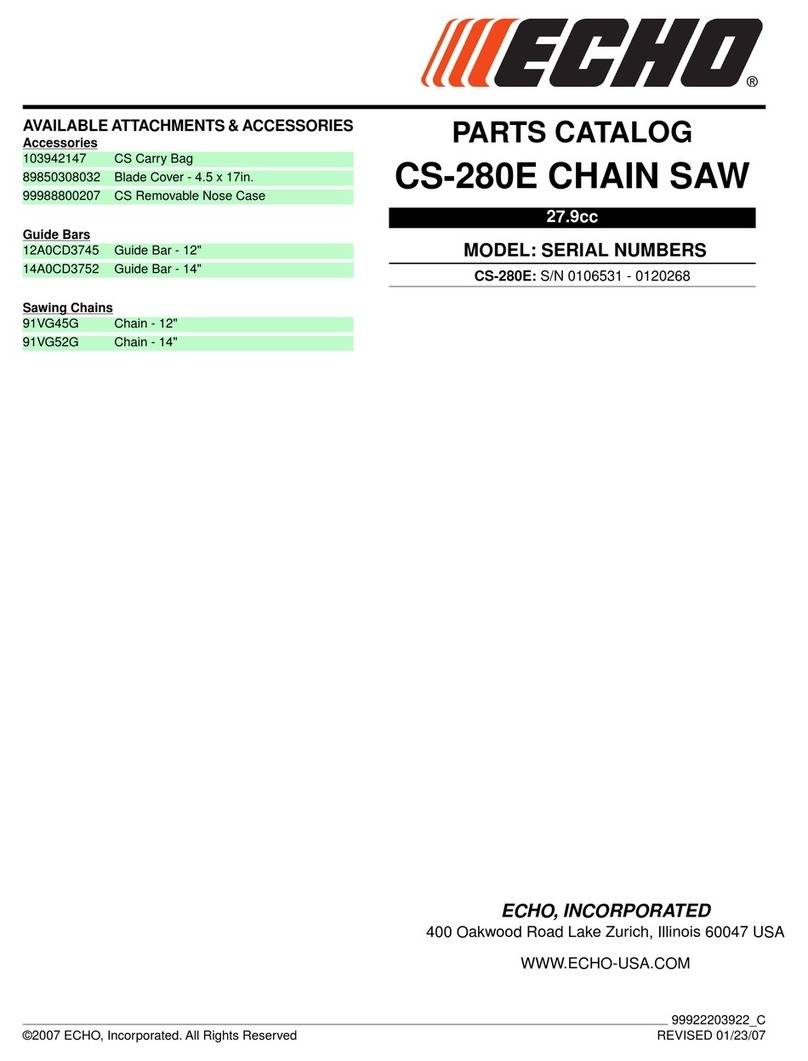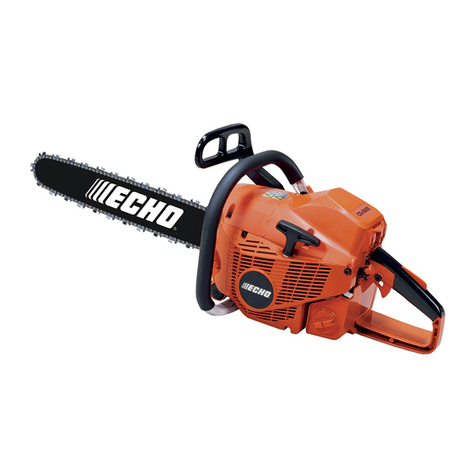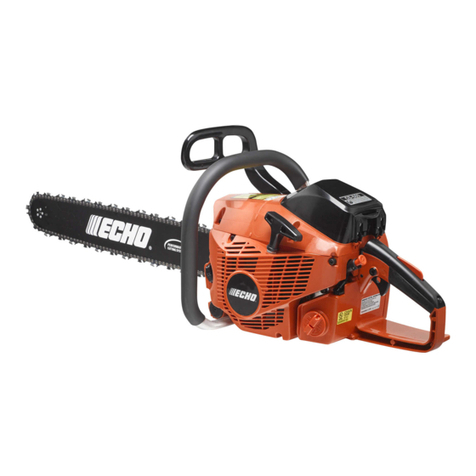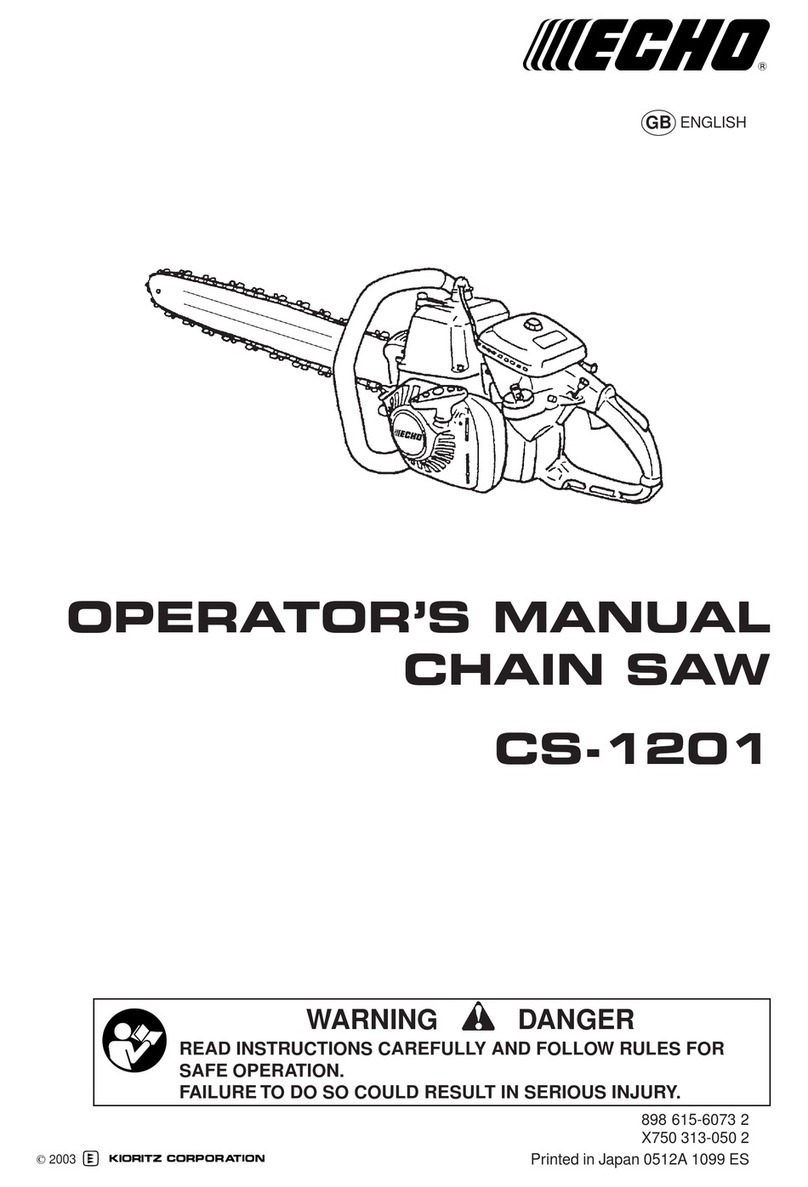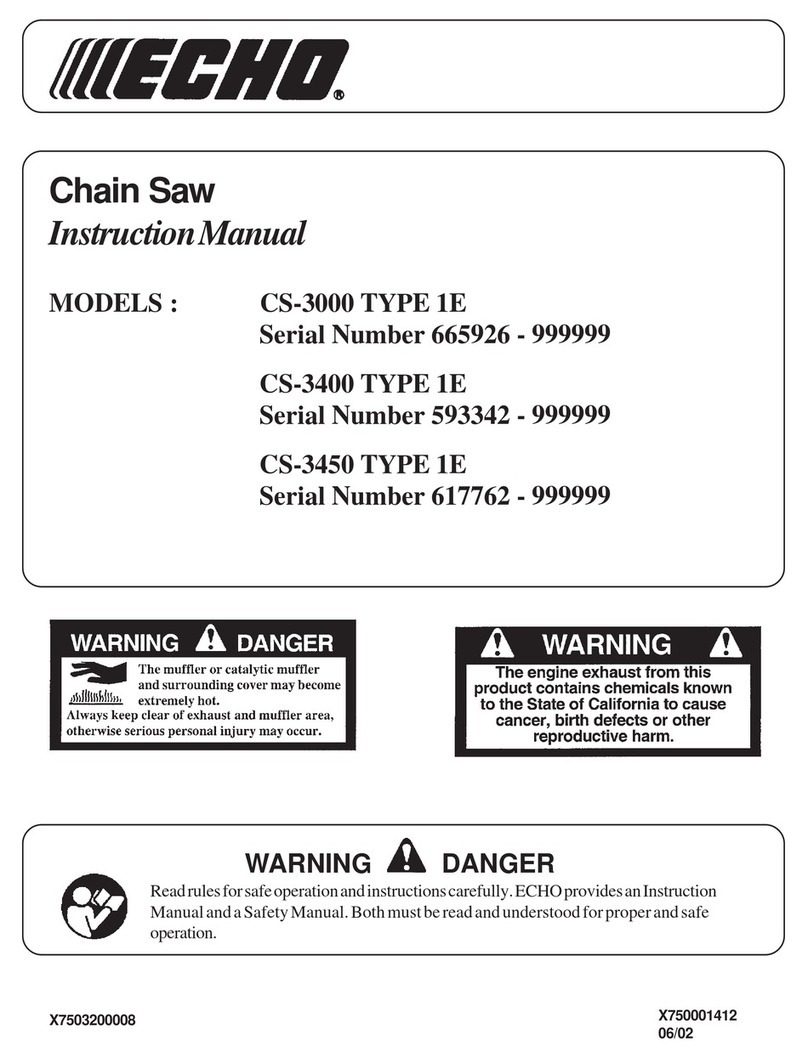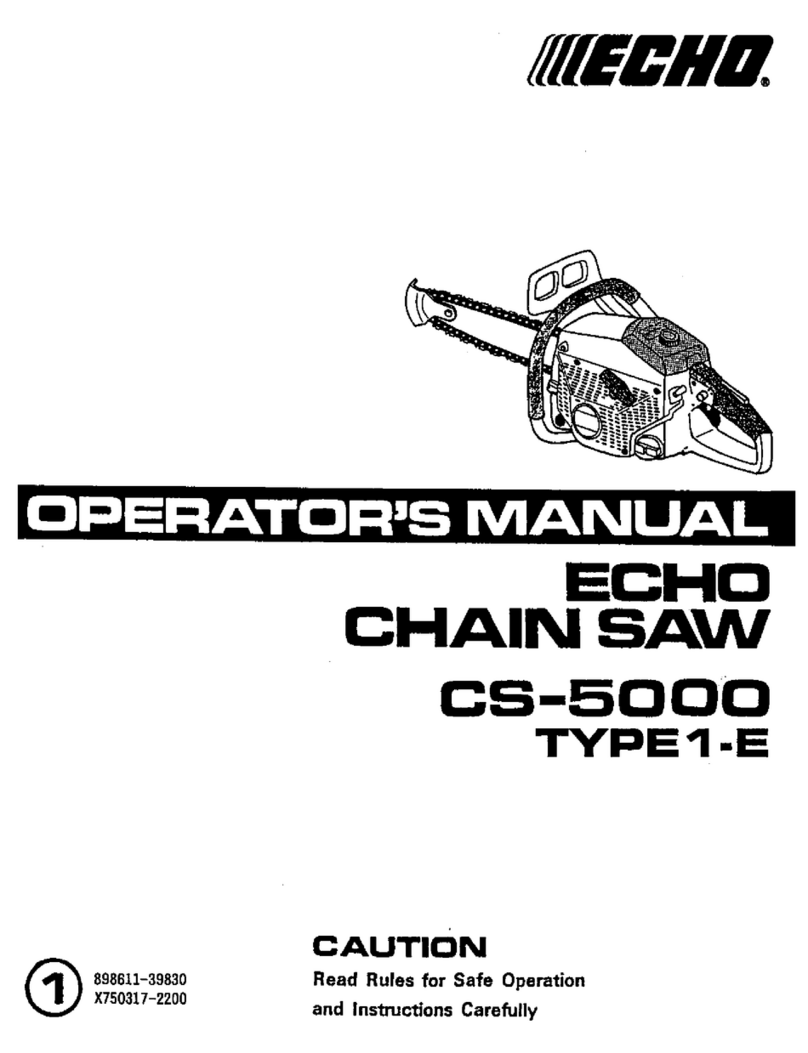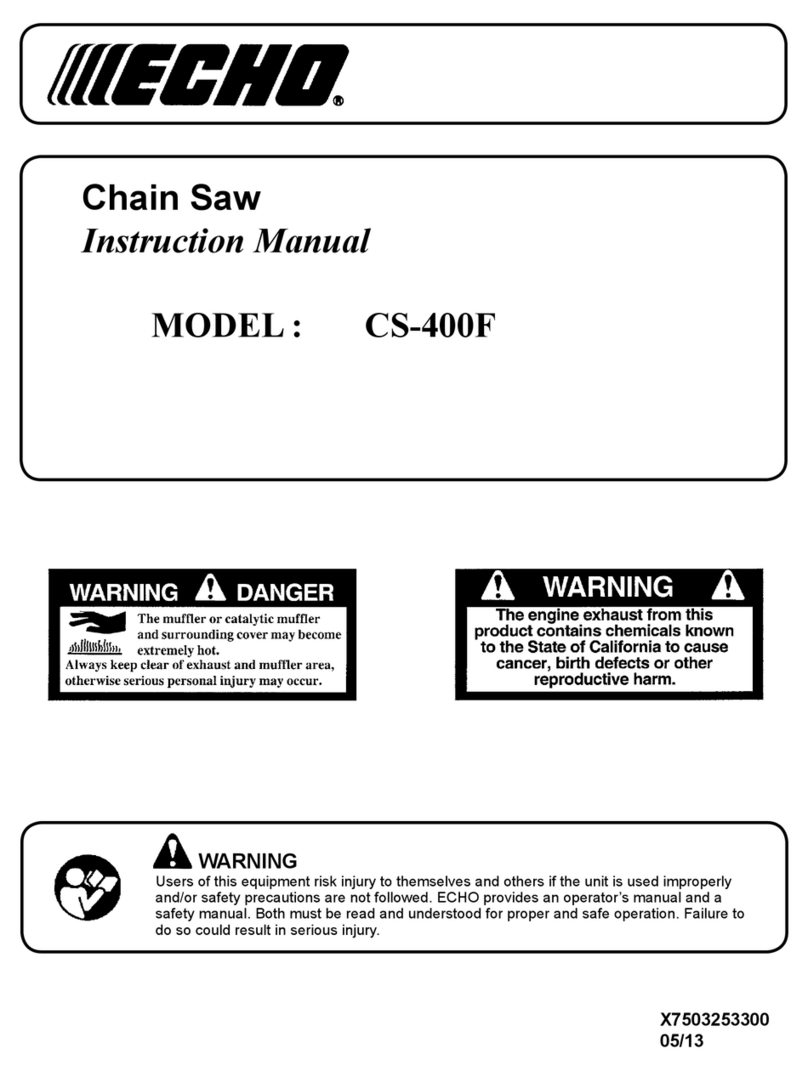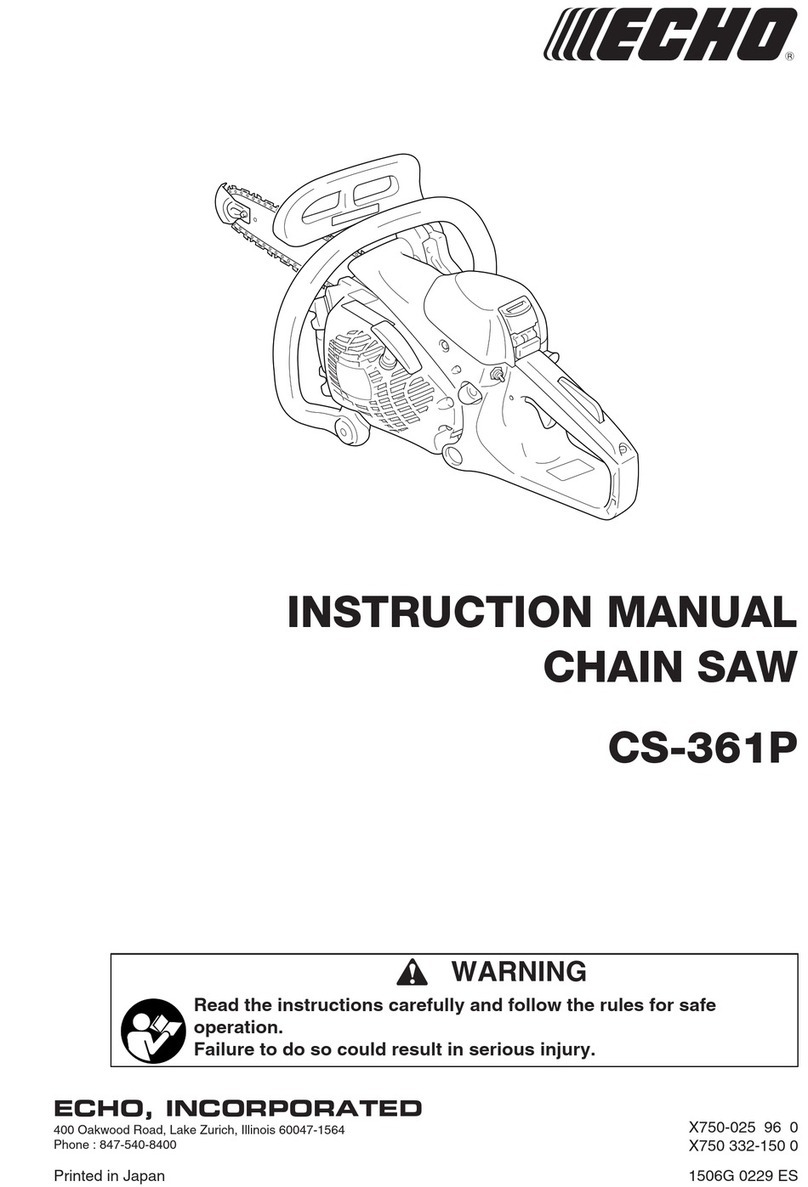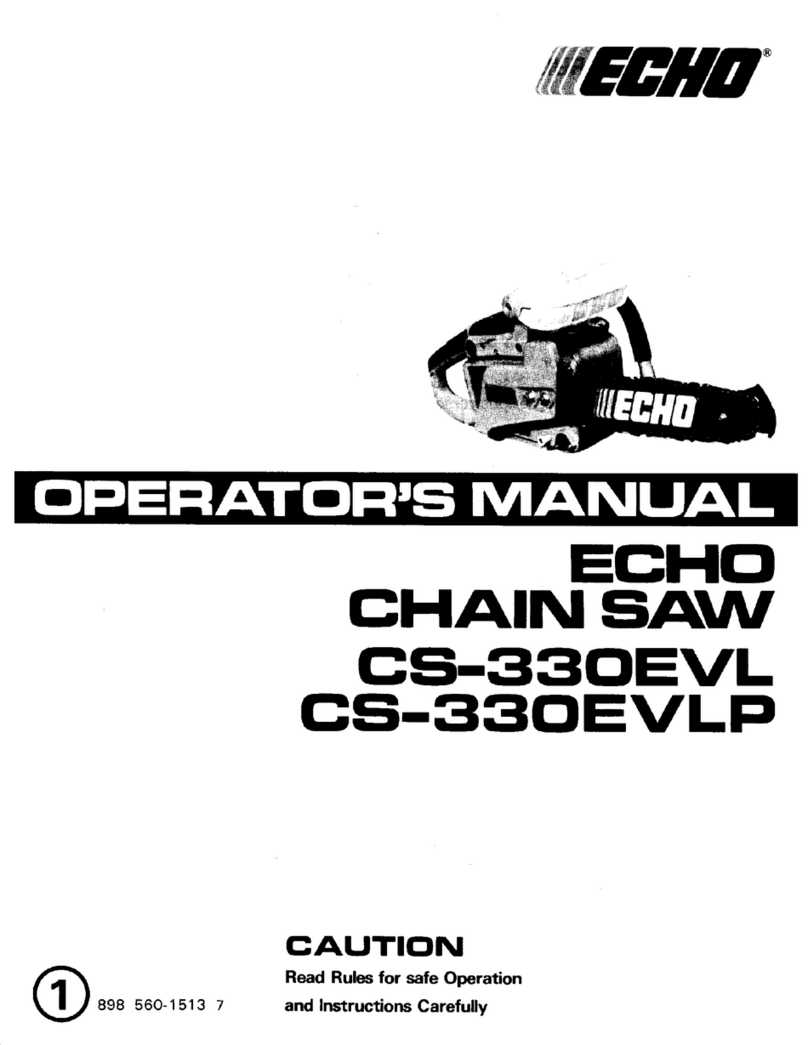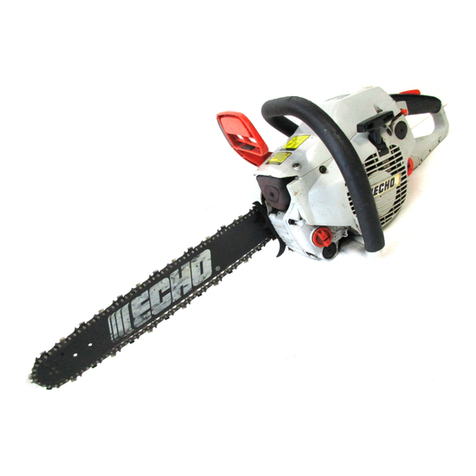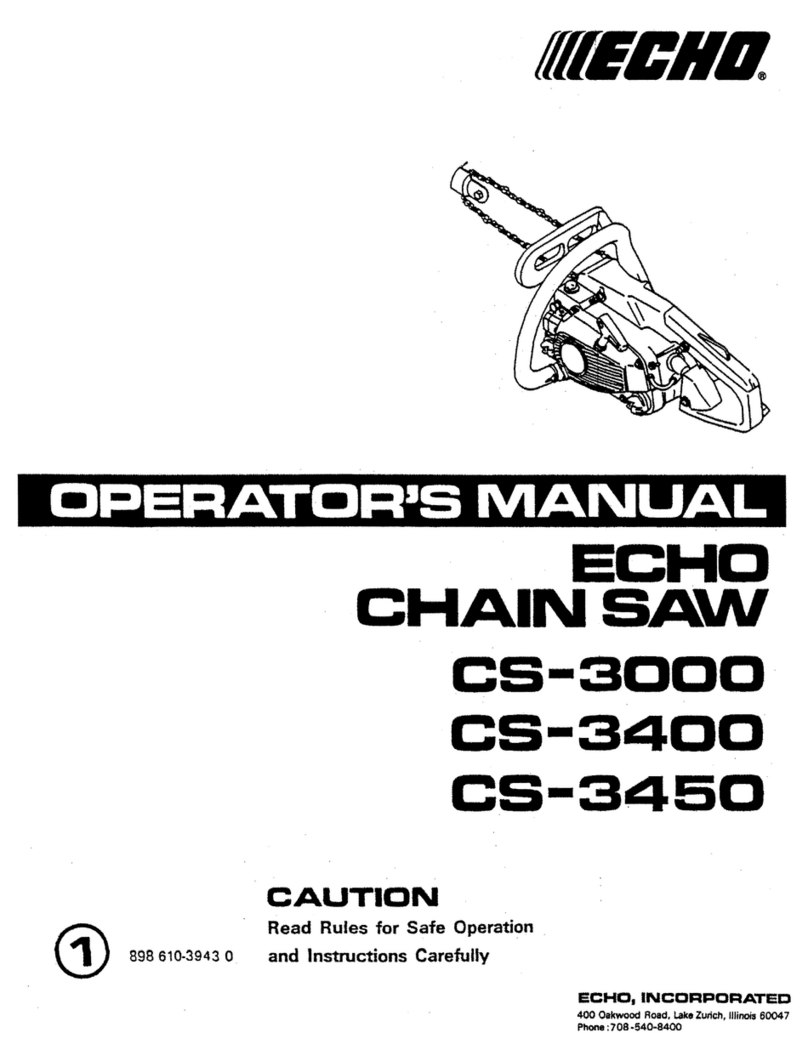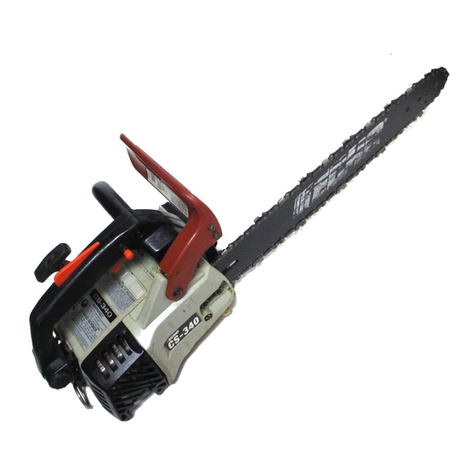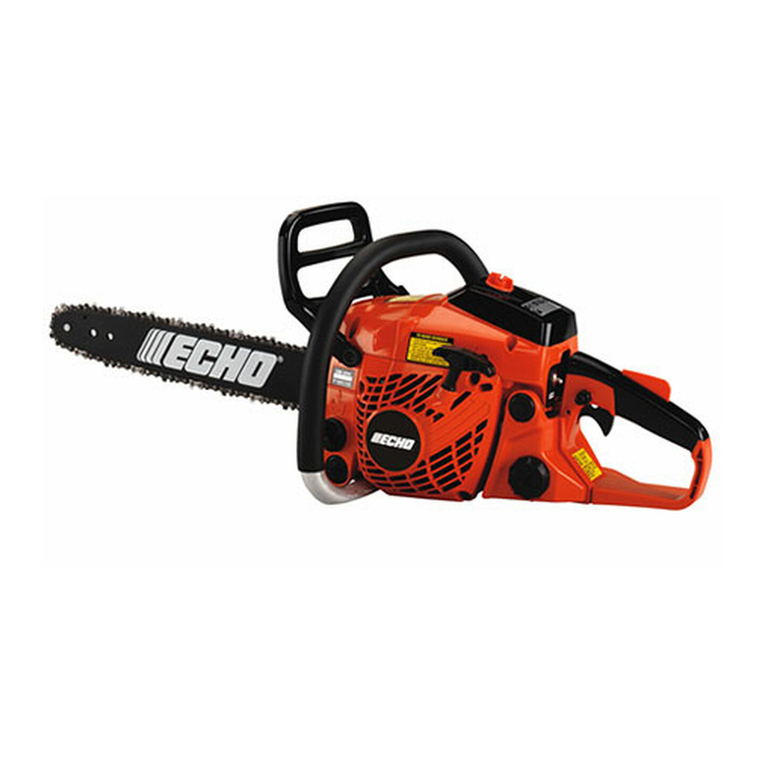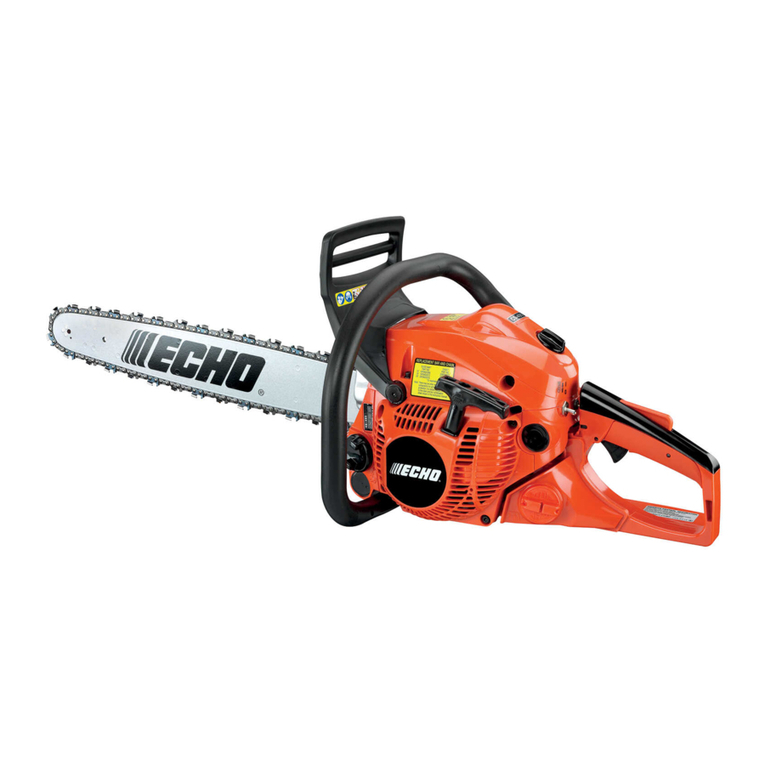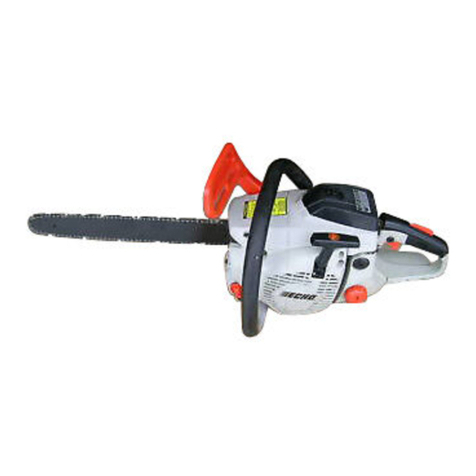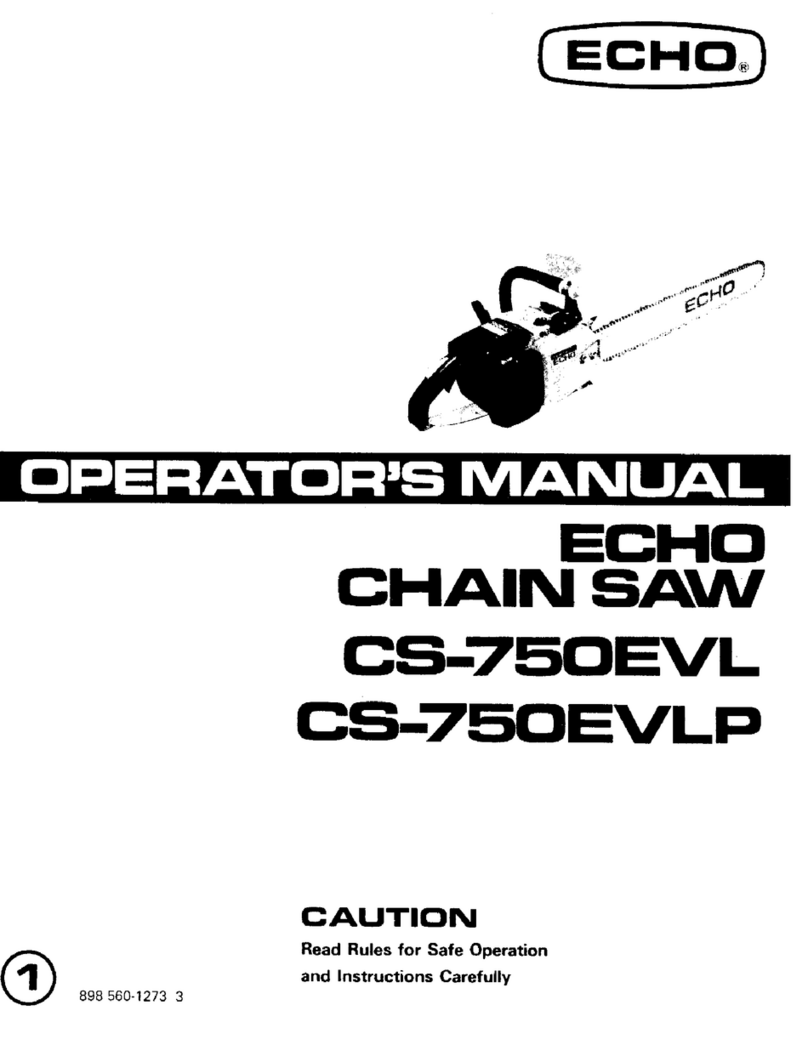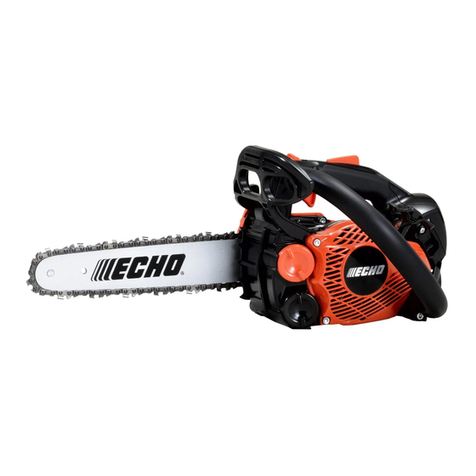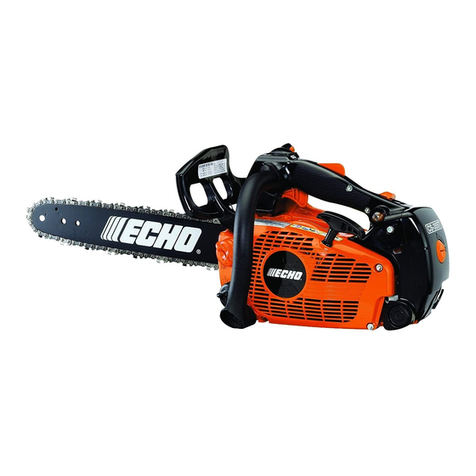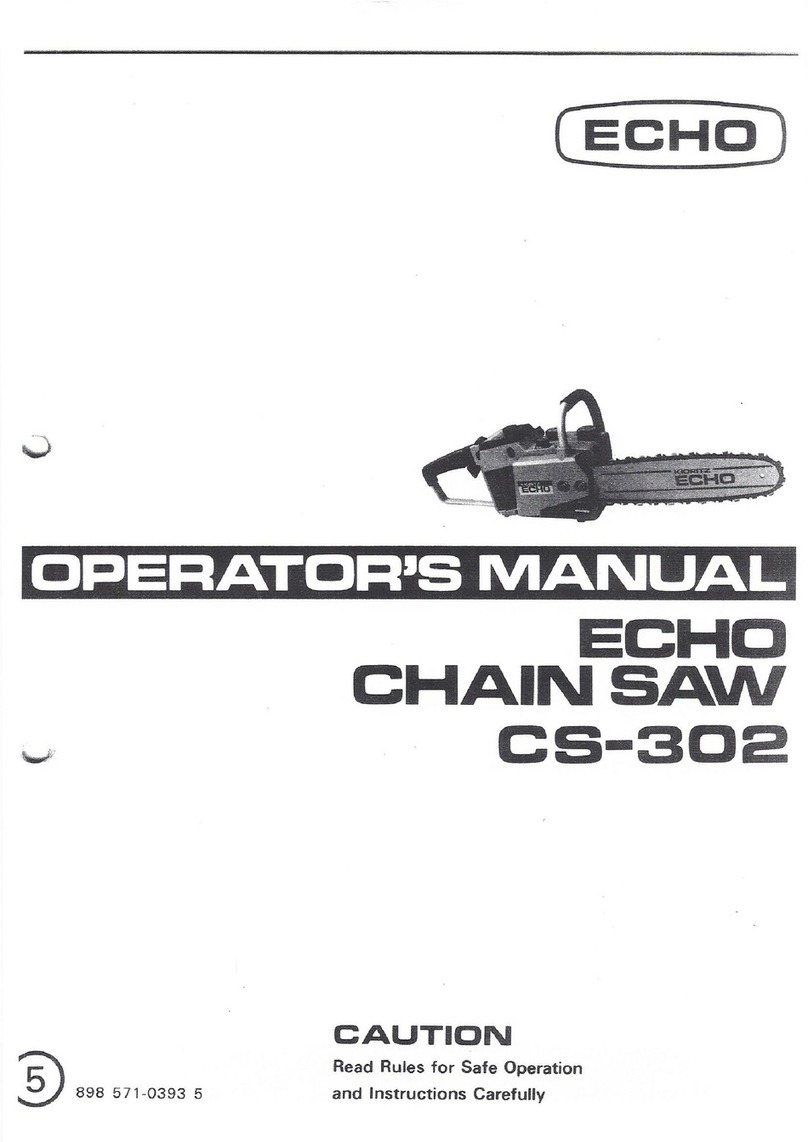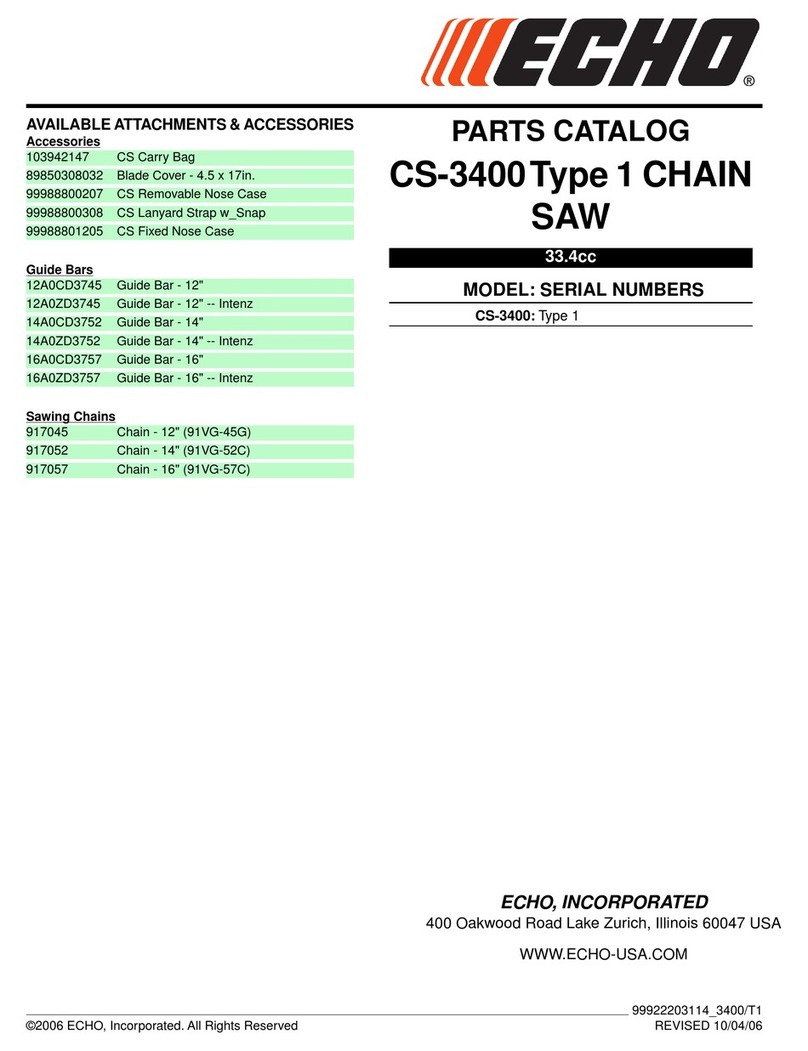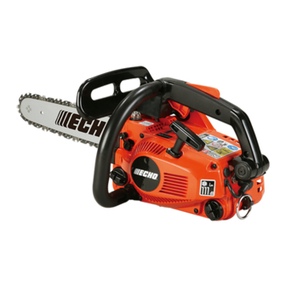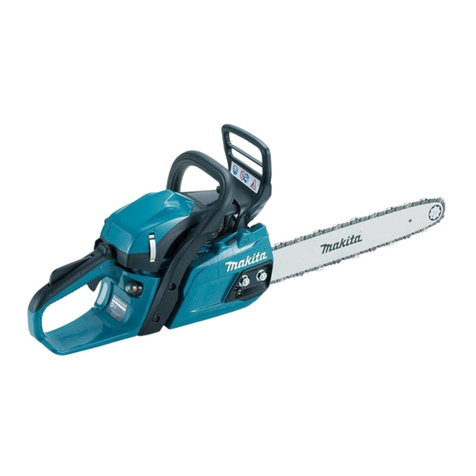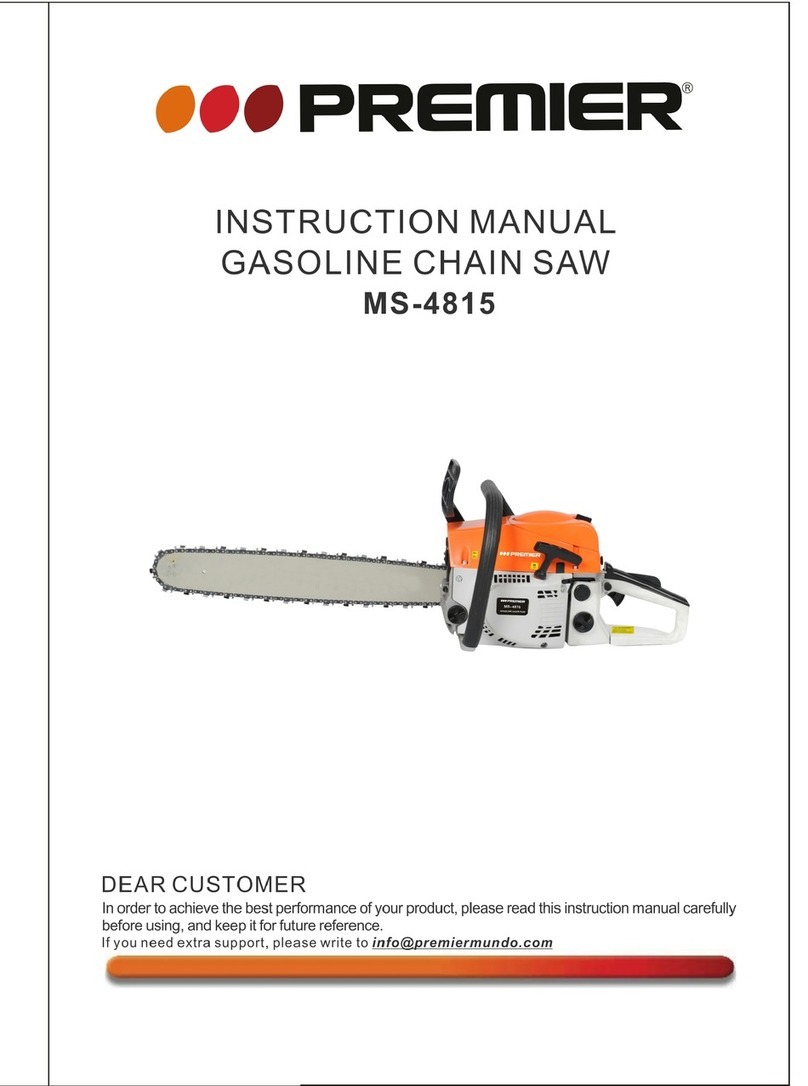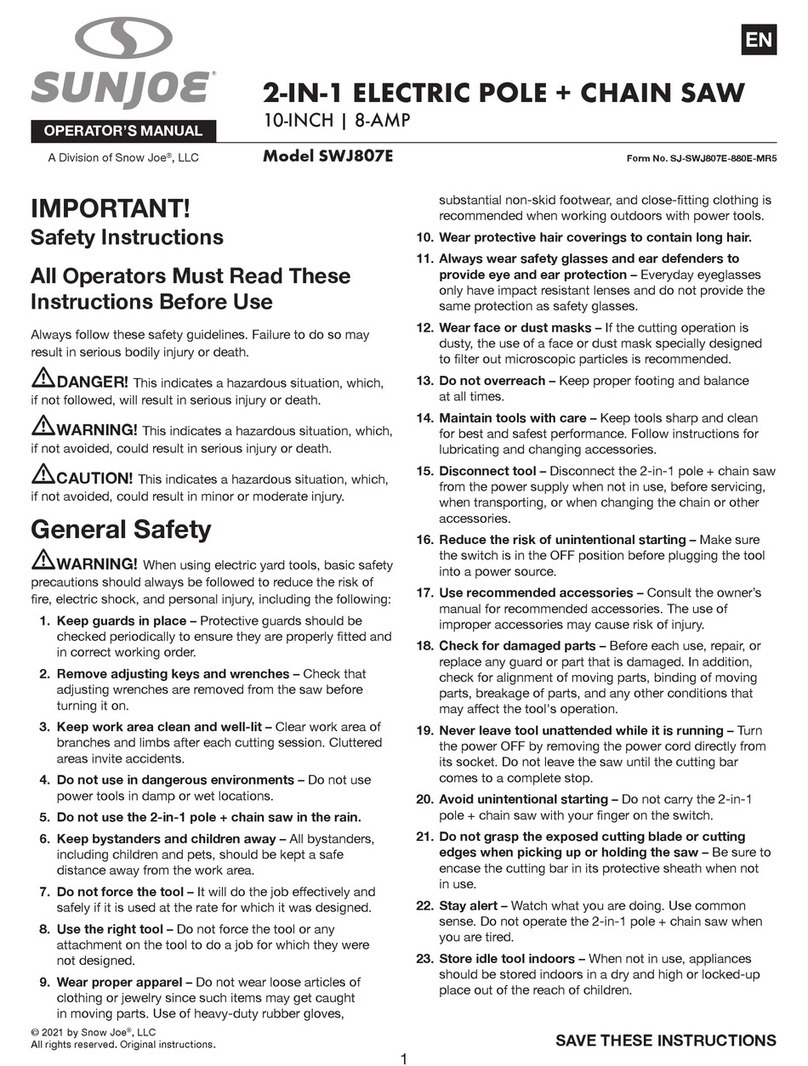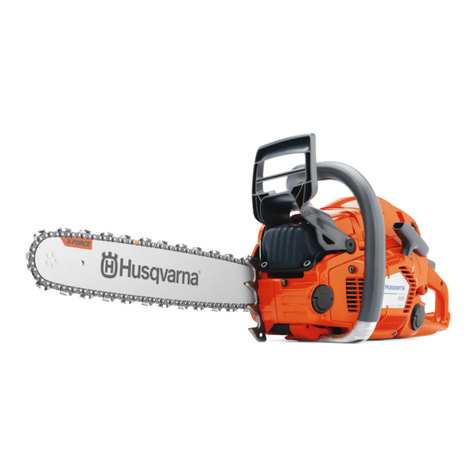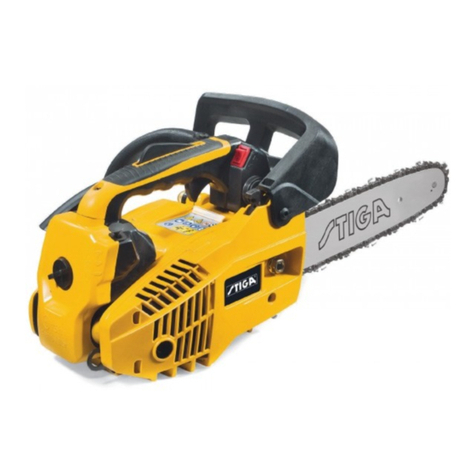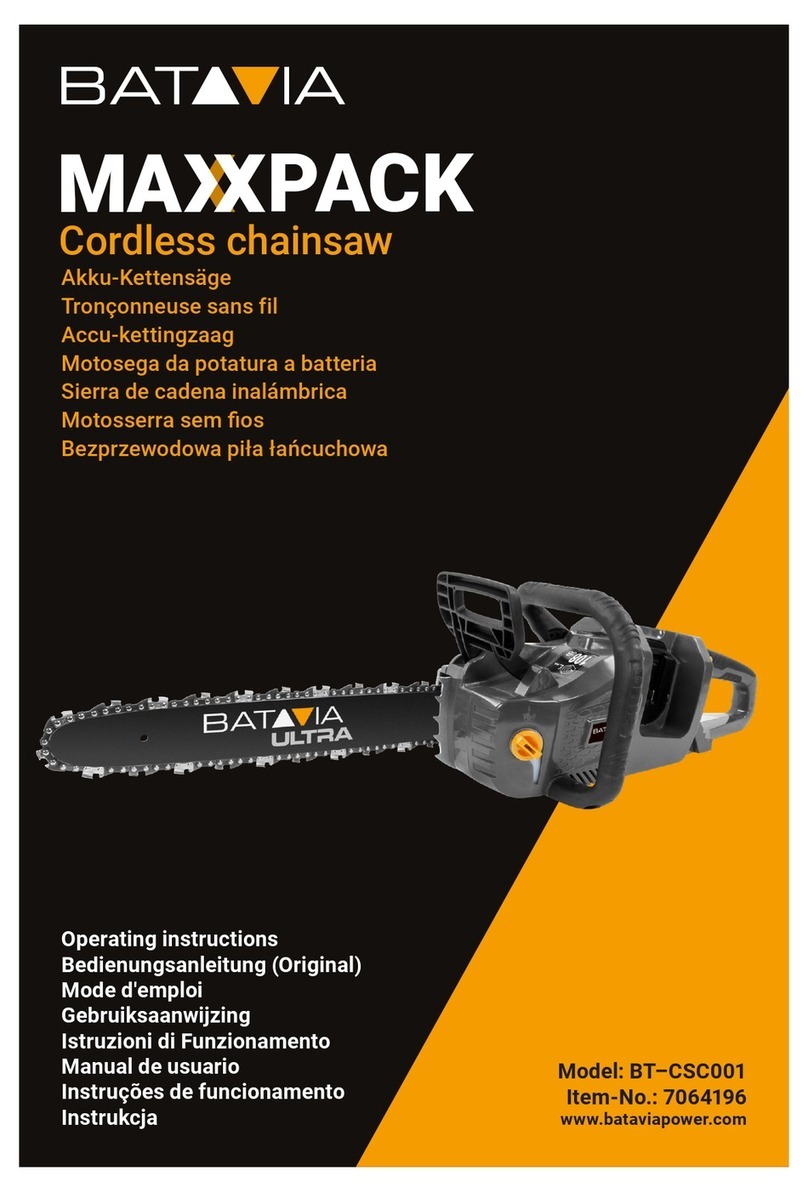
TABLE OF CONTENTS
CS-2511WES
251Ws 1
Page Page
1 SERVICE INFORMATION .................................. 2
1-1 Specications ....................................................2
1-2 Technical data ................................................... 3
1-3 Torque limits ...................................................... 5
1-4 Special repairing materials ............................... 5
1-5 Service limits ..................................................... 6
1-6 Special tools ..................................................... 7
2 STARTER SYSTEM (ES-start / S-start) ........... 8
2-1 Disassembling starter assembly .......................9
2-2 Replacing starter rope .................................... 10
2-3 Assembling starter .......................................... 11
2-4 Replacing starter pawl .................................... 13
3 IGNITION SYSTEM ........................................... 14
3-1 Troubleshooting guide .................................... 15
3-2 Testing spark ................................................... 16
3-3 Inspecting spark plug ...................................... 17
3-4 Replacing spark plug cap and coil................... 17
3-5 Inspecting ignition switch ................................ 18
3-6 Replacing ignition switch ................................ 18
3-7 Replacing ignition coil ..................................... 20
3-8 Setting pole shoe air gaps .............................. 21
3-9 Inspecting yweel and key .............................. 21
4 FUEL SYSTEM ................................................. 23
4-1 Inspecting air lter ........................................... 24
4-2 Replacing air cleaner cover latch .................... 25
4-3 Inspecting fuel cap and fuel strainer ............... 25
4-5 Inspecting and replacing tank vent ................. 27
4-6 Replacing purge bulb ...................................... 29
4-7 Replacing fuel line and fuel return line ............ 30
4-8 Adjusting carburetor ........................................ 32
4-8-1 General adjusting rules ................................ 32
4-8-2 Initial setting Throttle adjust screw, L mixture
needle and H mixture needle .......................... 32
4-8-3 Adjusting carburetor ..................................... 33
4-9 Testing carburetor ........................................... 34
4-10 Inspecting crankcase pulse passage ............ 35
4-11 Inspecting metering lever height .................... 35
4-12 Inspecting inlet needle valve ......................... 36
4-13 Inspecting diaphragm and others .................. 37
4-14 Replacing welch plug .................................... 37
4-15 Installing carburetor ....................................... 38
5 CLUTCH SYSTEM ............................................ 39
5-1 Inspecting clutch parts .................................... 39
5-2 Replacing clutch parts .................................... 41
5-3 Installing clutch assembly ............................... 41
6 CHAIN BRAKE SYSTEM .................................. 42
6-1 Replacing brake lever and torsion spring ....... 42
6-2 Inspecting chain brake parts ........................... 44
7 SAW CHAIN LUBRICATION SYSTEM ............. 46
7-1 Inspecting oil cap and strainer ........................ 46
7-2 Inspecting oil tank vent .................................... 47
7-3 Inspecting and replacing oil line ...................... 48
7-4 Inspecting worm gear ..................................... 49
7-5 Cleaning and replacing auto-oiler assembly ... 50
8 ENGINE ............................................................. 53
8-1 Testing cylinder compression .......................... 54
8-2 Cleaning cooling air passages ........................ 55
8-3 Inspecting mufer and exhaust port ................ 56
8-4 Testing crankcase and cylinder sealings ......... 57
8-5 Removing engine block .................................. 58
8-6 Inspecting cylinder .......................................... 59
8-7 Inspecting piston and piston ring .................... 60
8-8 Replacing oil seal ............................................ 61
8-9 Inspecting crankcase and crankshaft ............. 62
8-10 Replacing oil seal and ball bearing................ 63
8-11 Assembling crankshaft and crankcase .......... 64
8-12 Installing piston ring and cylinder .................. 65
9 HANDLE AND CONTROL SYSTEM ................ 66
9-1 Replacing throttle control parts ....................... 67
9-2 Replacing front handle and spring .................. 68
9-3 Replacing rear handle and springs ................. 69
10 GUIDE BAR MOUNTING SYSTEM ................ 71
10-1 Replacing nut for xing guide bar .................. 71
10-2 Replacing chain tensioner ............................. 72
10-3 Replacing guide bar stud............................... 73
11 MAINTENANCE GUIDE ................................... 74
11-1 Troubleshooting guide ................................... 74
11-2 Disassembly chart ......................................... 76
11-3 Service intervals ............................................ 77
